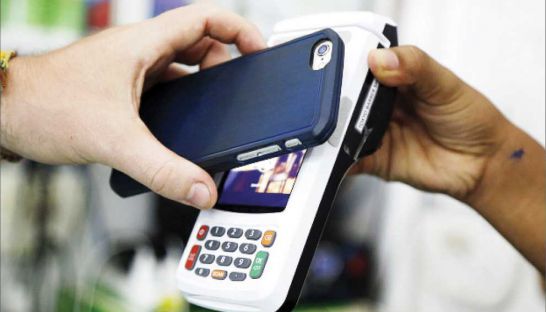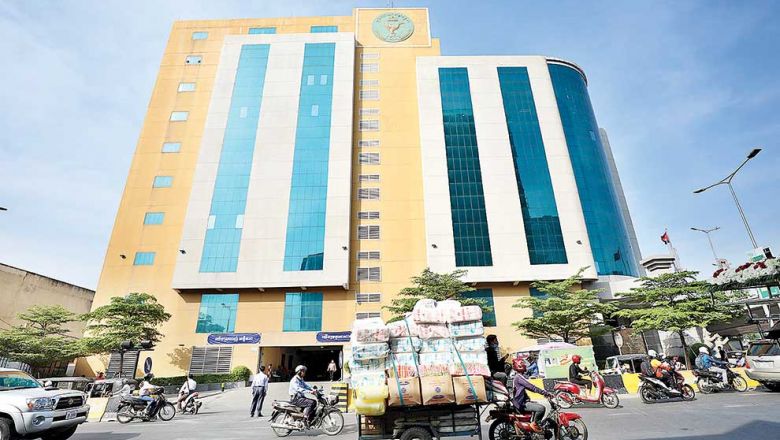QR codes could prove to be a digital alternative to cash for Cambodia
QR codes could prove to be a digital alternative to cash for Cambodia
Global payments giant Visa is the first international financial firm to announce the roll out of a payment solution in Cambodia for quick response codes, or QR codes, those pixelated black and white squares designed to be read by a smartphone camera that have begun popping up at retail outlets throughout the capital.

The company is preparing to launch mVisa in Cambodia and 10 other countries worldwide, according to a spokeswoman, who said the QR code payment platform would be available to merchants and consumers through participating local banks in the coming months.
“We expect the first banks in Cambodia to start offering the service in the third quarter of this year,” she said.
In a press release at the unveiling of mVisa earlier in February, the company explained that the digital payments service allows retailers to accept payments without investing in expensive point of sale (POS) machinery, and is available to any consumer with a camera-equipped smartphone.
“mVisa aids in overcoming merchant infrastructure issues as it allows consumers to use their mobile phones to make cashless purchases at merchant outlets, pay bills remotely and even send money to friends and family members by securely linking their Visa debit, credit or prepaid account to the mVisa application,” it said.
mVisa will join the growing list of QR payment platforms in Cambodia, which include apps developed by Acleda Bank, the country’s largest commercial bank, and Pi Pay, a new digital payment smartphone application.
Originally designed for applications in the Japanese automotive industry, QR codes have been given broader usage for everything from product tracking to advertising and digital payments.
David Totten, director at Emerging Markets Consulting, said the technology could become widely adopted in Cambodia given its low infrastructure costs and the country’s rapid uptake of smartphone ownership.
However, the challenge for QR payment platforms will be to convince local merchants and consumers of the benefits of using digital payments – a tall order given the strong local preference for cash transactions.
“QR codes payment systems share the same benefits as all cashless payments – it is faster, more secure and cheaper way to transact compared to cash,” he said. “[However], customer adoption is the key issue. The customer’s preference for cashless over cash for the majority of his or her transactions, is probably unknown at this point.”
Many of the developed economies that were early to adopt QR code payment systems have already moved on to more advanced payment technology such as Near Field Communication, which allows consumers to pay for purchases by tapping their phone to a POS terminal. Yet the chip-based technology is also more expensive, which makes it arguably less suited to the Cambodian market.
“The ubiquity of optical scanning devices [in phones] compared to alternative technology such as NFC makes QR codes attractive, lowering the total cost of implementing the system,” said Totten.
Zokhir Rasulov, chief digital officer at ABA bank, said his bank is currently researching QR code usage in other markets and has yet to decide on whether to adopt a QR payment platform. He said while consumers in Cambodia might be prepared to use QR codes for payments, to be successful the platform’s fees would have to be small enough to make it financially viable for small businesses.
“It’s quite early to predict whether this type of cashless payments can be a successful replacement to the traditional cards, or if it will develop as an alternative option of payments, or if it will not be popular at all,” he said.
“However, in my opinion it has a high potential to be adopted by Cambodian consumers, while I’m not sure about small merchants who are still very sensitive to any charges on transactions applied by banks and other payment companies such as Visa or MasterCard.”
Chy Sila, general director of CBM Corporation, which operates food franchises like Domino’s Pizza, Lotteria and Tous les Jours bakery, said his company has partnered with Pi Pay to offer various form of mobile digital payments including QR codes at several restaurant locations. He noted that in order to improve adoption rates, companies needed to ensure that consumers understand the technology and incentivise its use.
“QR code payment is quite convenient, but you need to have people who are able to download and understand the simple process of how to use it, and they have to know how to upload the money into their digital wallet,” he said.
“You have to give them special and interesting discounts so that they feel like they can use digital money to save when they spend. That is a very important point from the business side.”














